FT66 Smartwatch Review
A phenomenal outdoors GPS budget smartwatch that has nearly everything
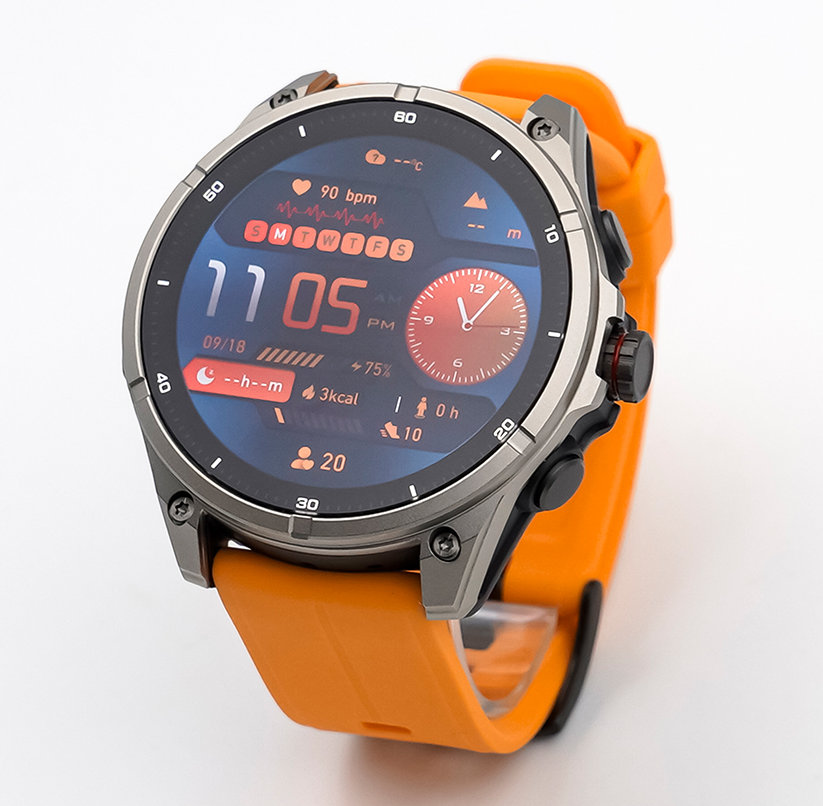
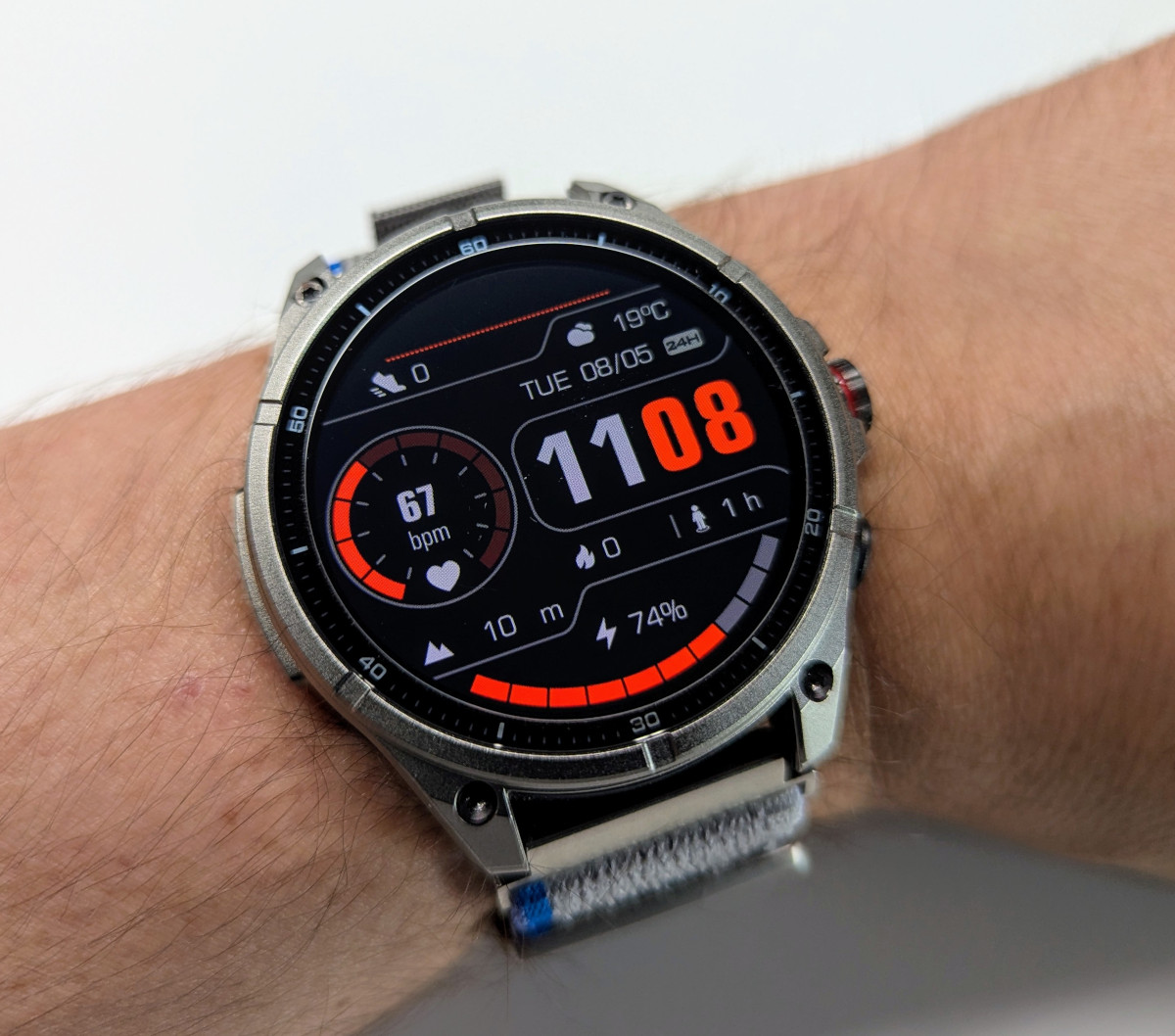

✓ Pros
- 9 day heavy use battery life
- Excellent build quality
- Incredible value for the price
- Good sports tracking
- Good GPS activity tracking
- LED torch with hardware button
- Excellent UI smoothness
- Kriki OS is very good
- Very good health stats
✗ Cons
- Somewhat inconsistent off-activity heart rate monitoring
- A few sports activities could be more detailed
- Barometric altimeter's calibration does not stick
Specifications
- Approximate price (July 2025)
- £30 / $40 / €35
- Other names
-
- Supercalla Onyx
- Rogbid Apex FT
- Display
- 1.46-inch AMOLED, 466x466
- App
- Fitbeing
- Processor
- Actions ATS3085S4
- Heart rate sensor
- HX3695S
- SpO2 sensor
- HX3695S
- Geomagnetic sensor
- QMC6308
- Accelerometer
- ST-LIS2DH12
- Barometric sensor
- SPL07-003
- GPS
- L1 single band. GPS, BeiDou, GLONASS, Galileo, QZSS
- Battery
- 670mAh (24h on GPS mode, 15 days normal use, 35 days on standby)
- Water Resistance
- 5ATM
- Certifications
- MIL-STD-810H
- Bluetooth version
- 5.3
- Dimensions
- 48x14mm
- Weight without strap
- 49g
- Weight with provided strap
- 69g
- Watch band type
- Standard 22mm lug width
- LED torch
- OSRAM GW JCLPS2.EM (2 of them)
- Features
-
- Heart rate
- SpO2
- Sleep tracking
- Step counter
- GPS activity tracking
- Compass
- Barometer
- Barometric altimeter
- Torch
- Breathing exercises
- Stress monitoring
- Menstrual cycle
- Bluetooth calling
- Phone notifications
- Weather forecast
- Phone music control
- Timers
- Stopwatch
- Alarms
- Camera shutter
Box contents
The usual: watch with strap, cable, manual.

Design and Build Quality
Let’s just get the obvious out of the way from the get-go: the watch has clearly been modelled after the Garmin Fenix 8, which you can clearly see in the design of the bezel and the position of the torch.
It is a good-looking watch with a zinc alloy bezel (either in black or silver) and a plastic body. The buttons are also made of zinc alloy, and the crown has a red highlight.
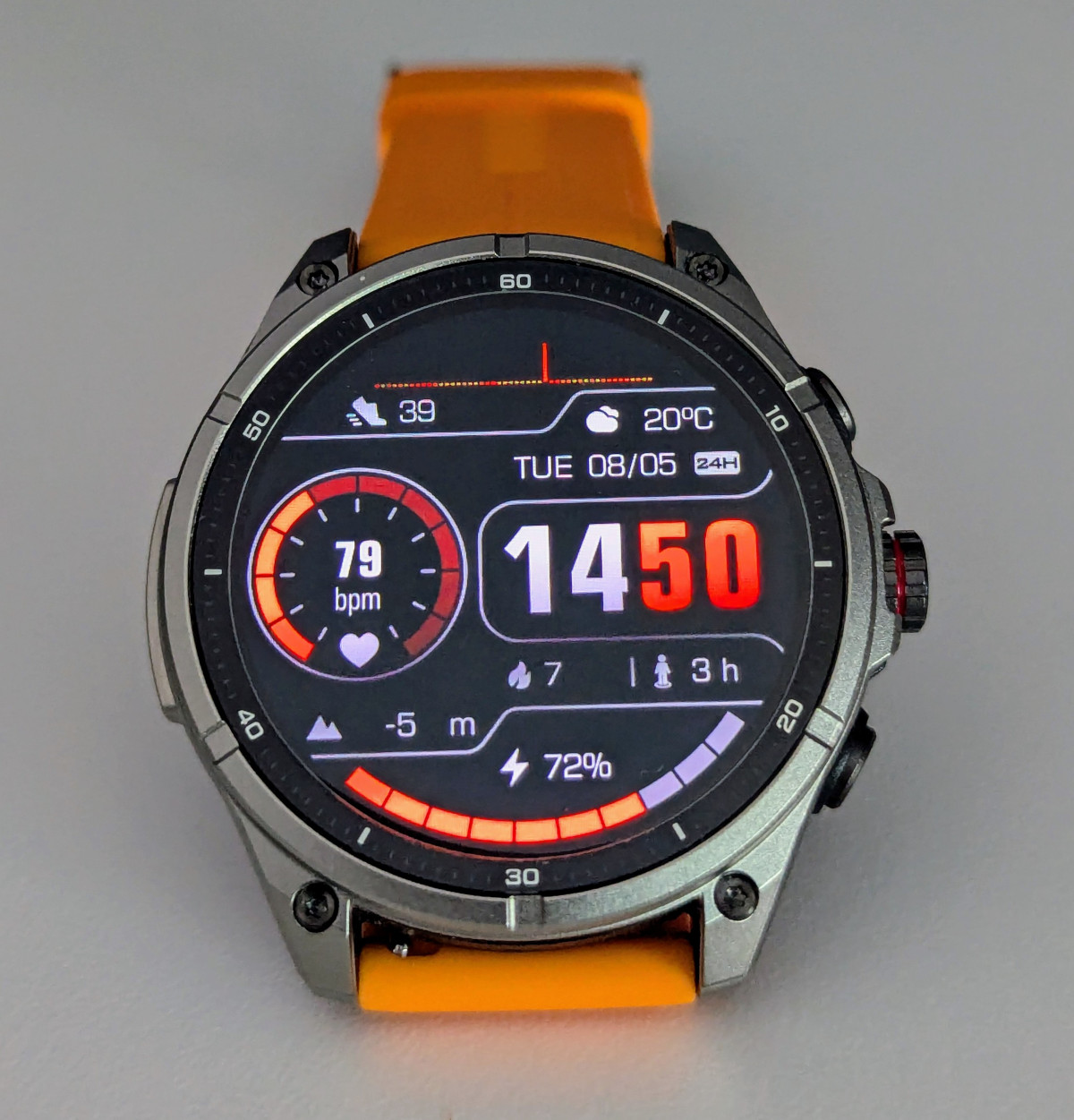
The build quality of the watch is high. It feels solid and durable, but note this is not a rugged smartwatch - there’s no Gorilla Glass or high-strength materials, which is to be expected and not a criticism considering the price point. I’ve worn it for about 12 days and it remains unscuffed, although I did fit a screen protector.
The back is made of hard plastic, with charging pins and windows for the heart rate and SpO2 sensors.
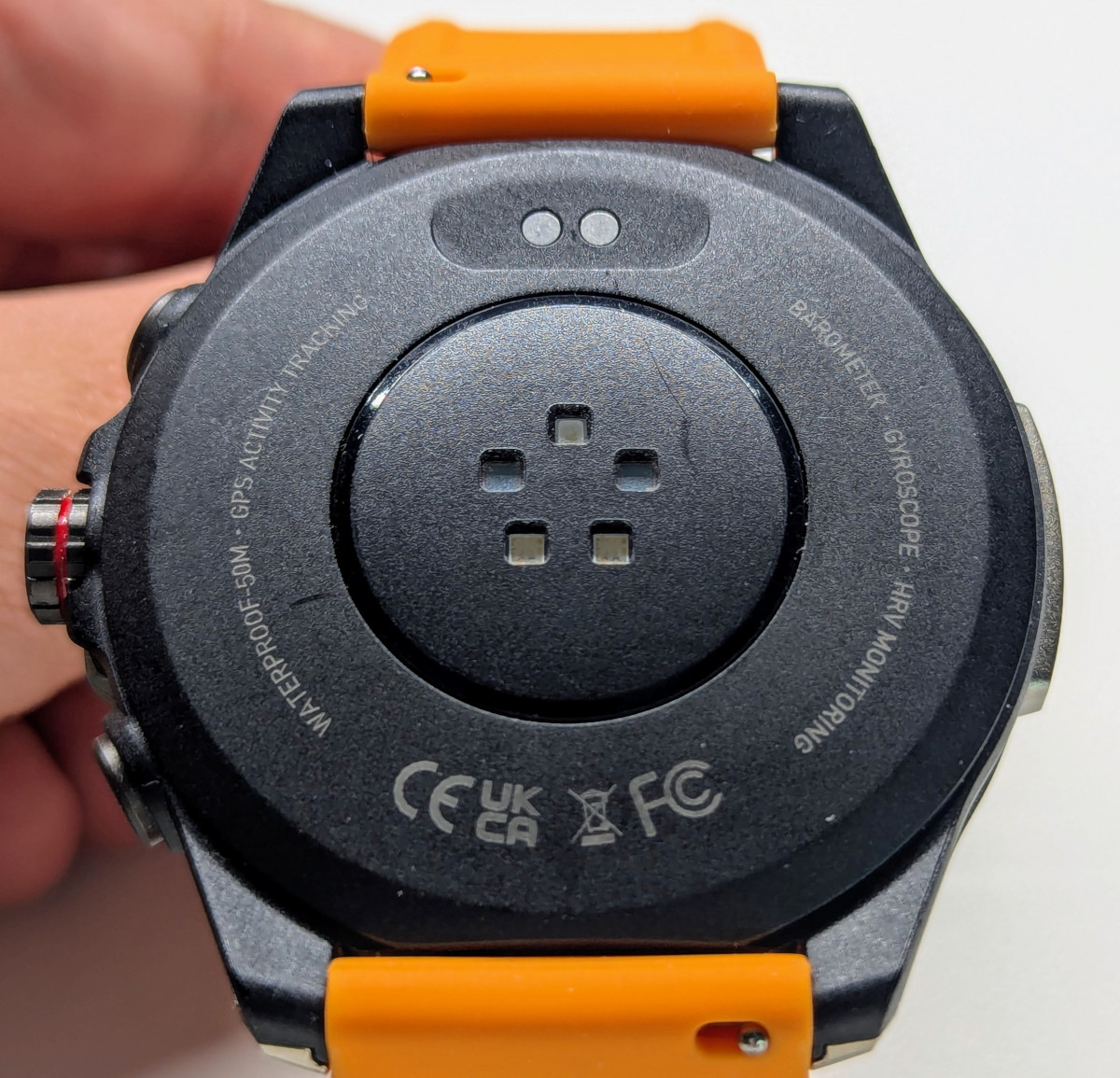
The watch has three physical buttons on the right-hand side, one of which is a rotary crown:
- Top: this is a configurable shortcut button. Long-press allows you to choose which function it triggers. Short press triggers that function. More importantly, double press turns the torch on and off.
- Crown: the crown’s operation is the best I’ve used on budget smartwatches. Instead of a ratchety action that clicks a button internally when rotated, it’s smooth - I would imagine it’s a potentiometer. It’s also clickable, which takes you back to the watch face and opens the apps list.
- Bottom: shortcut to workouts when pressed, and to the power menu when long-pressed.
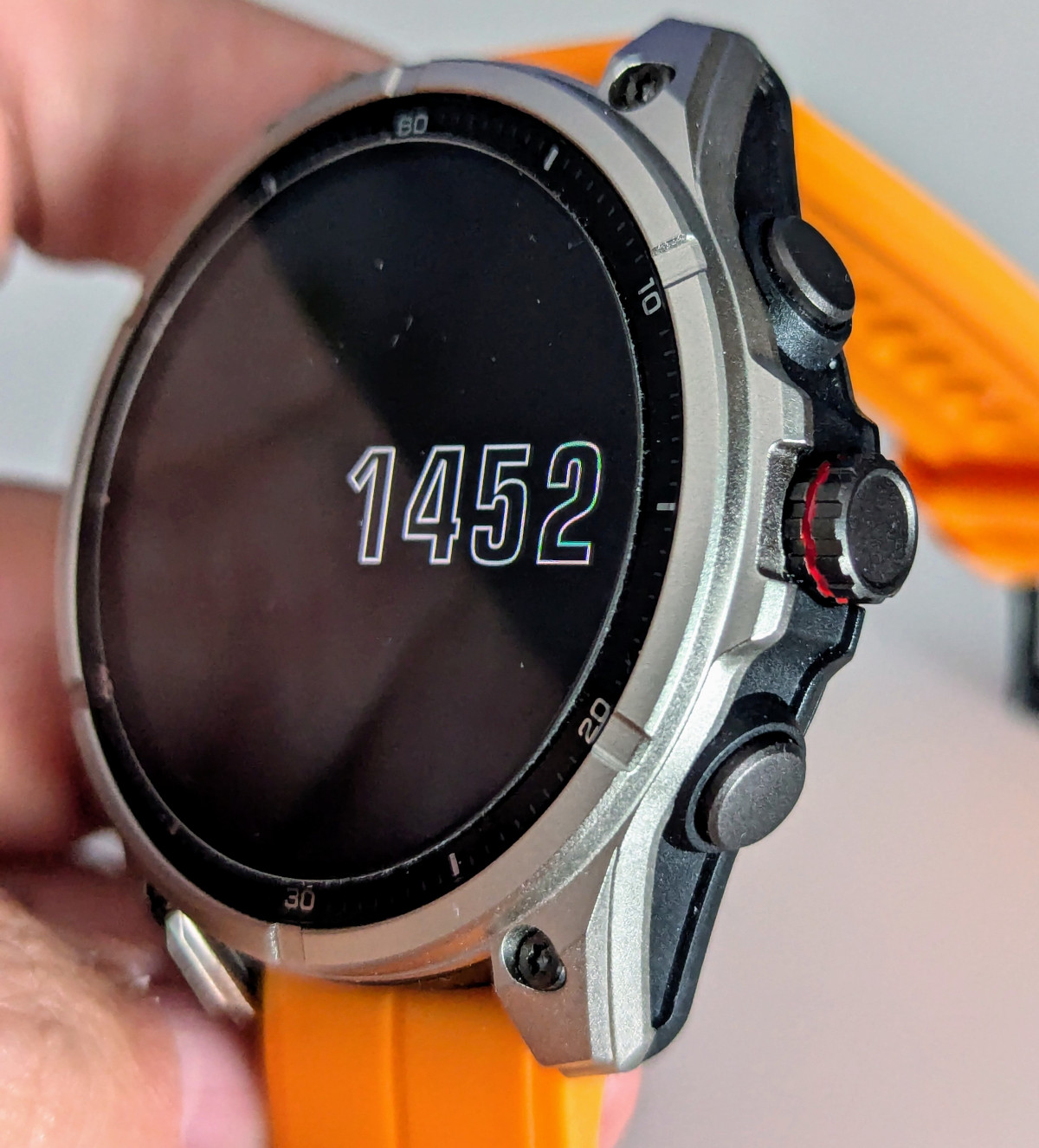
The torch
A quick word about the torch. I really love smartwatches with torches - once you’ve had one, it’s a feature that’s really hard to give up.
On this watch we have 2 very bright LEDs that can be activated either via an app, a quick setting shortcut, or with a double tap on the top button. It has 4 intensity levels - the lowest is enough to walk around the house while saving some battery, whereas the highest is really, really bright. Good enough in a pinch for outdoors if you don’t have a proper torch handy. The beam is rather wide, instead of focused, so it illuminates quite a lot of space in front of you, but outdoors it won’t reach far.
It’s located at the top of the watch body, just like on the Garmin Fenix 8, and it looks the same. Even the control app looks the same. The location ensures you have access to the full beam, not being occluded by your hand, but it has the downside that it doesn’t point towards your hands, which can be annoying if you’re trying to do something with them. It’s a compromise.

Display
The 1.43-inch AMOLED display is bright and vibrant, with good visibility even in direct sunlight thanks to its 600-nit brightness. The 466x466 resolution provides crisp text and graphics, and honestly, there’s absolutely nothing to complain about here.
As mentioned above, the glass is generic tempered glass (I don’t have its hardness at hand) and it’s recessed from the bezel, so putting the watch face down on a flat surface should protect it from getting scratched for the most part.
Being a regular flat circular face, you’ll be able to purchase screen protectors easily. You’ll see in the img that I’ve done so - specifically, a 38mm tempered glass protector which still leaves a little room on the sides to get it off should the need arise.
AOD (Always On Display) is available. Watch faces all come bundled with their own AOD equivalent, so there’s no selection of which AOD watch face to show. Battery life suffers quite a lot. I personally prefer to disable it and enable raise-to-wake - it reacts very quickly and consistently to the gesture, and it turns the screen off quickly once you lower the watch.
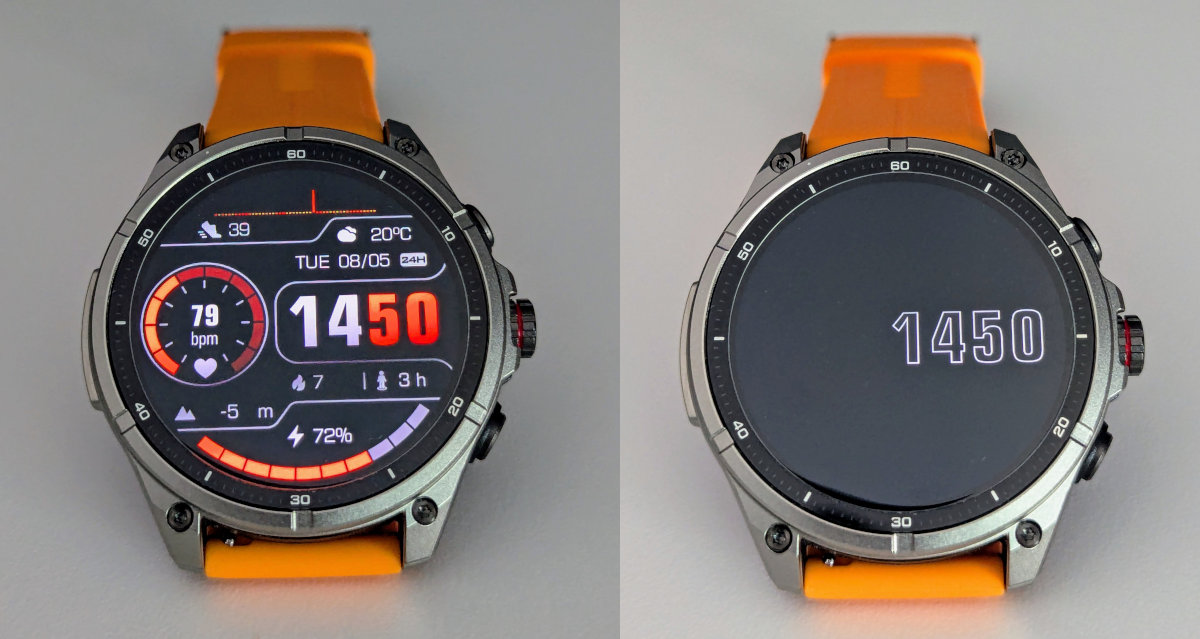
Watch interface
The FT66 uses Kriki OS v0.0.14 and the Fitbeing app. It’s the first watch of its kind that I use and I must say I’m very pleasantly surprised. Fonts are adequately sized and very smooth. The graphic design of the different apps and screens is pleasant, with vivid but not in-your-face colour schemes. And the interface’s fluidity is the best on any watch of this class I’ve tried so far thanks to the newer Actions ATS3085S4 MCU, which has a graphics accelerator - other watches (for instance, current and earlier GloryFitPro watches) use the ATS3085L instead, which doesn’t have this capability, and UI fluidity suffers as a result.
The rotating crown does not change the watch face (thankfully) and instead flips over different cards as well as the quick access window. More on that below. In fact, the rotating crown works pretty much everywhere, including the display brightness slider.
From the watch face, pulling down gets you your notifications. This is yet another pleasant surprise. They’re clearly laid out and show a lot of text - much more than other watches in the same price segment. You can’t reply to those notifications, but that’s also par for the course.
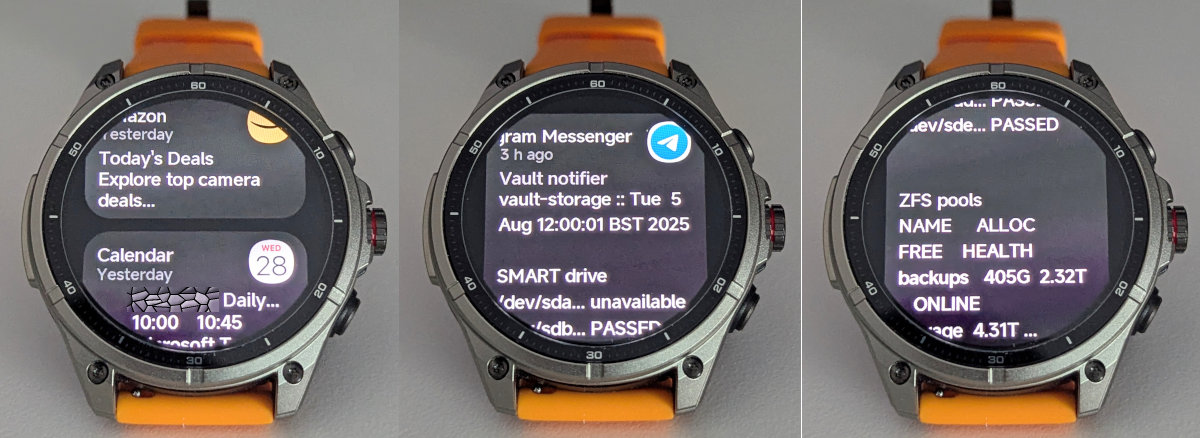
Swiping up brings up the quick settings and a status island that shows whether the Bluetooth connection to the app is live and the current battery charge. The buttons aren’t editable, but the default choice of buttons is very well reasoned - torch, find my phone, brightness, water lock, etc.
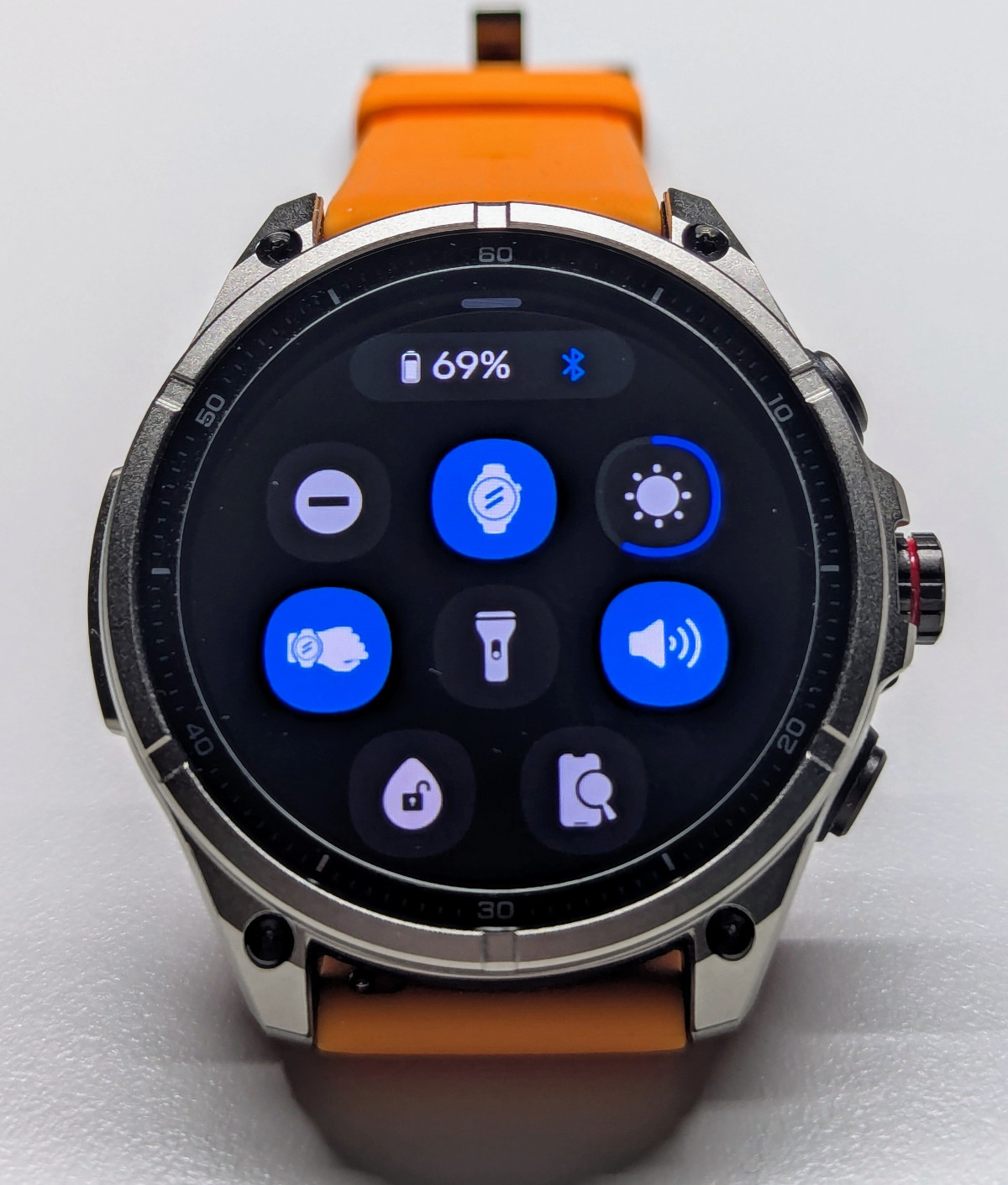
Swiping left takes you to the usual configuration of cards: daily activity summary, heart rate, workouts, sleep tracking, and weather. Worth noting: these are simple status screens that can’t be interacted with - if you need more detail, you need to go to the apps themselves from the apps menu.
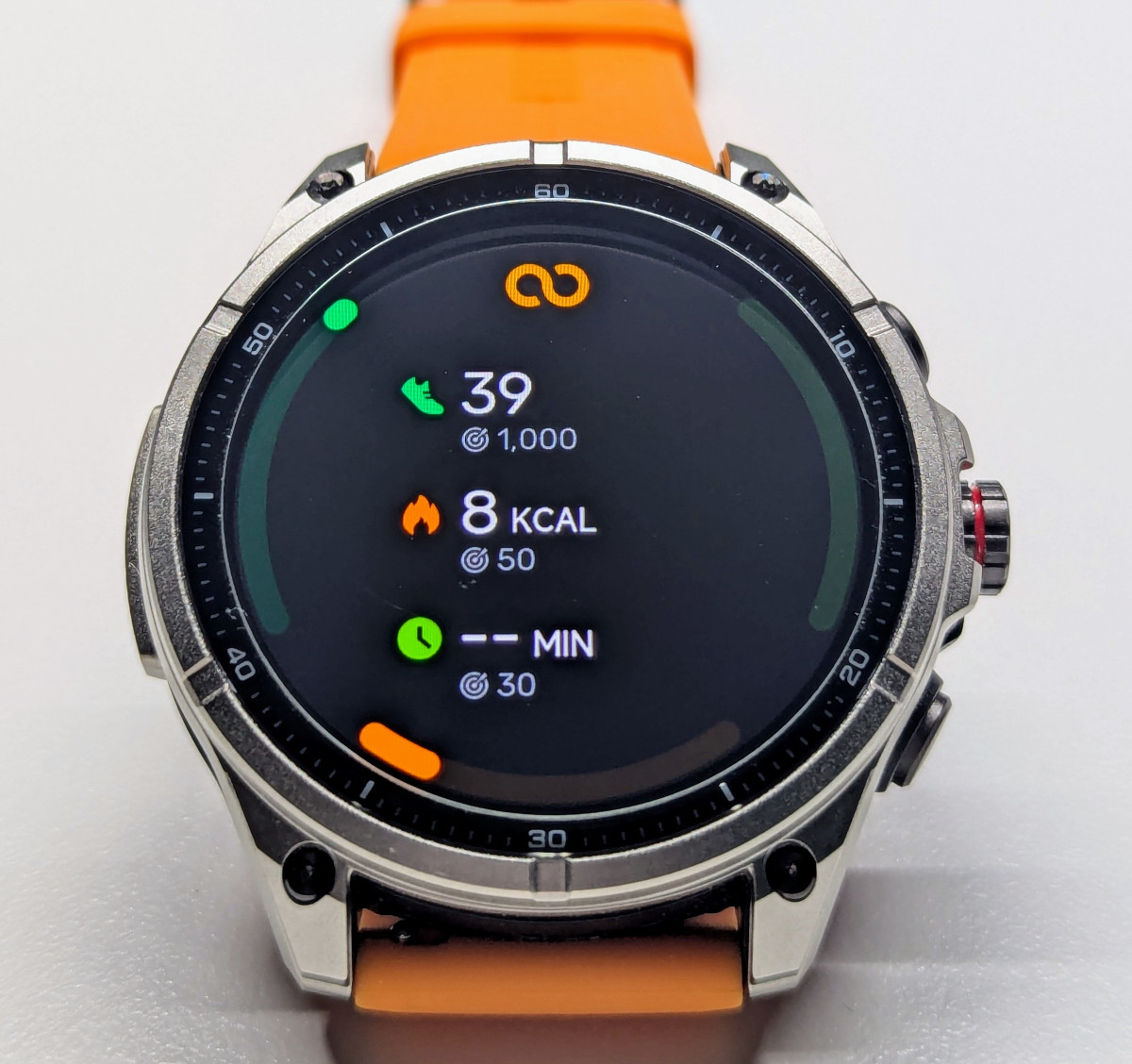
Swiping right brings up a small dashboard that has your recent apps, health and activity data, and a music control widget. Each little widget or button is tappable and takes you to the correct app to see more.
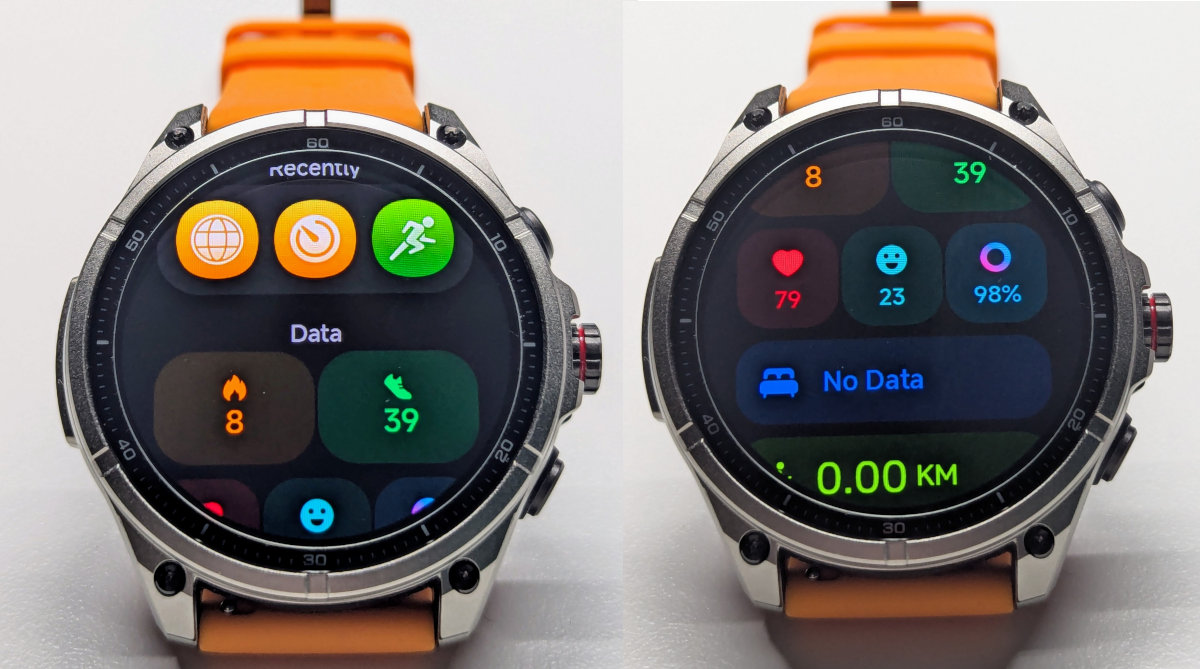
Finally, clicking the crown opens the apps menu. There are two styles of menu: list and waterfall. To be honest, I always go for the list (on this and other watches) as sometimes the icons don’t quite convey the app behind them.
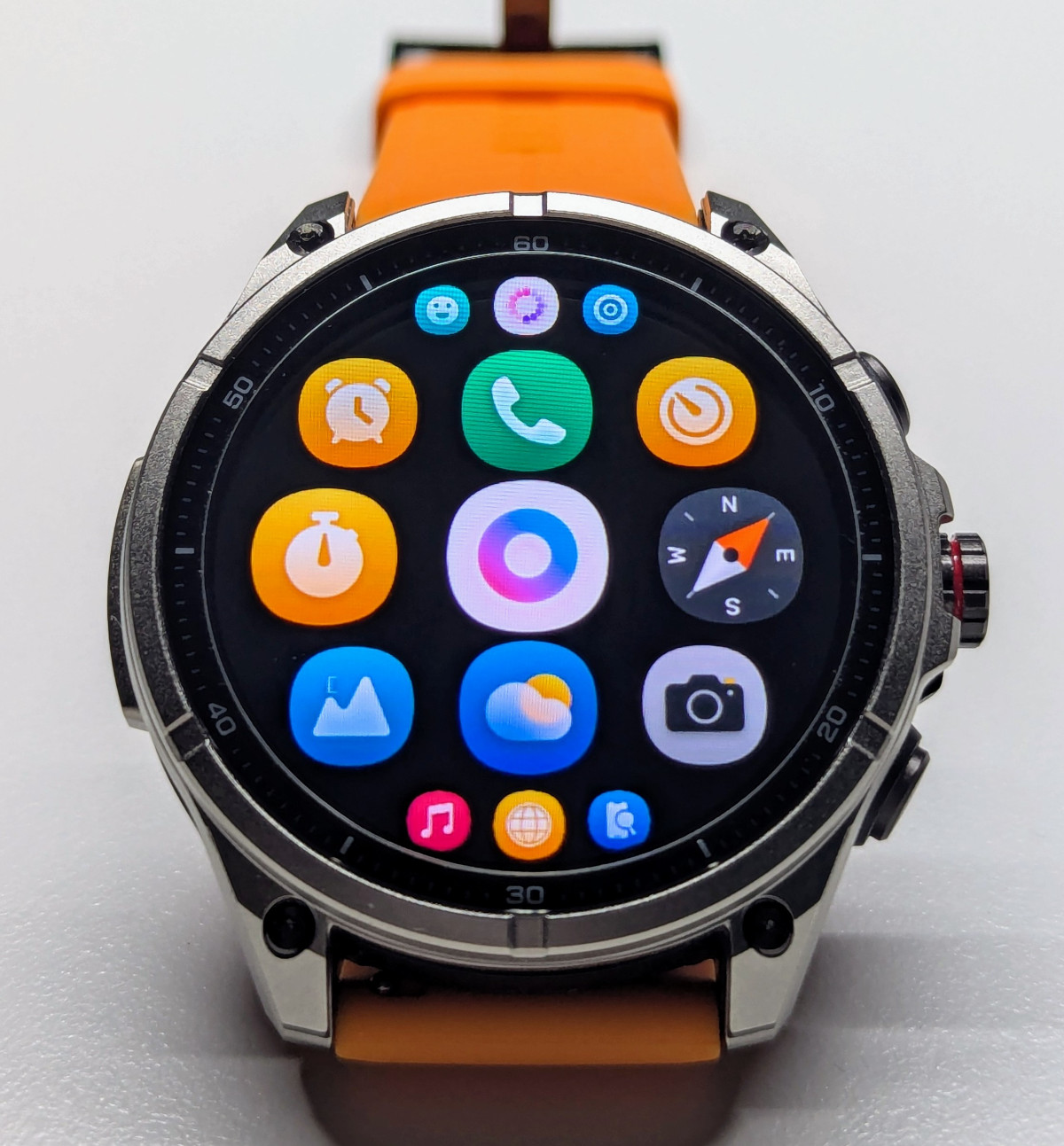
Watch faces
The watch comes with 6 preinstalled watch faces and they can all be removed and substituted for others from the app - this is also a feature I haven’t seen elsewhere. The watch has 4MiB of internal storage for these, and the app clearly tells you how much space each uses and how much you still have available. The default watch faces are restored in storage should you factory-reset the watch and are reinstallable via the app as well.
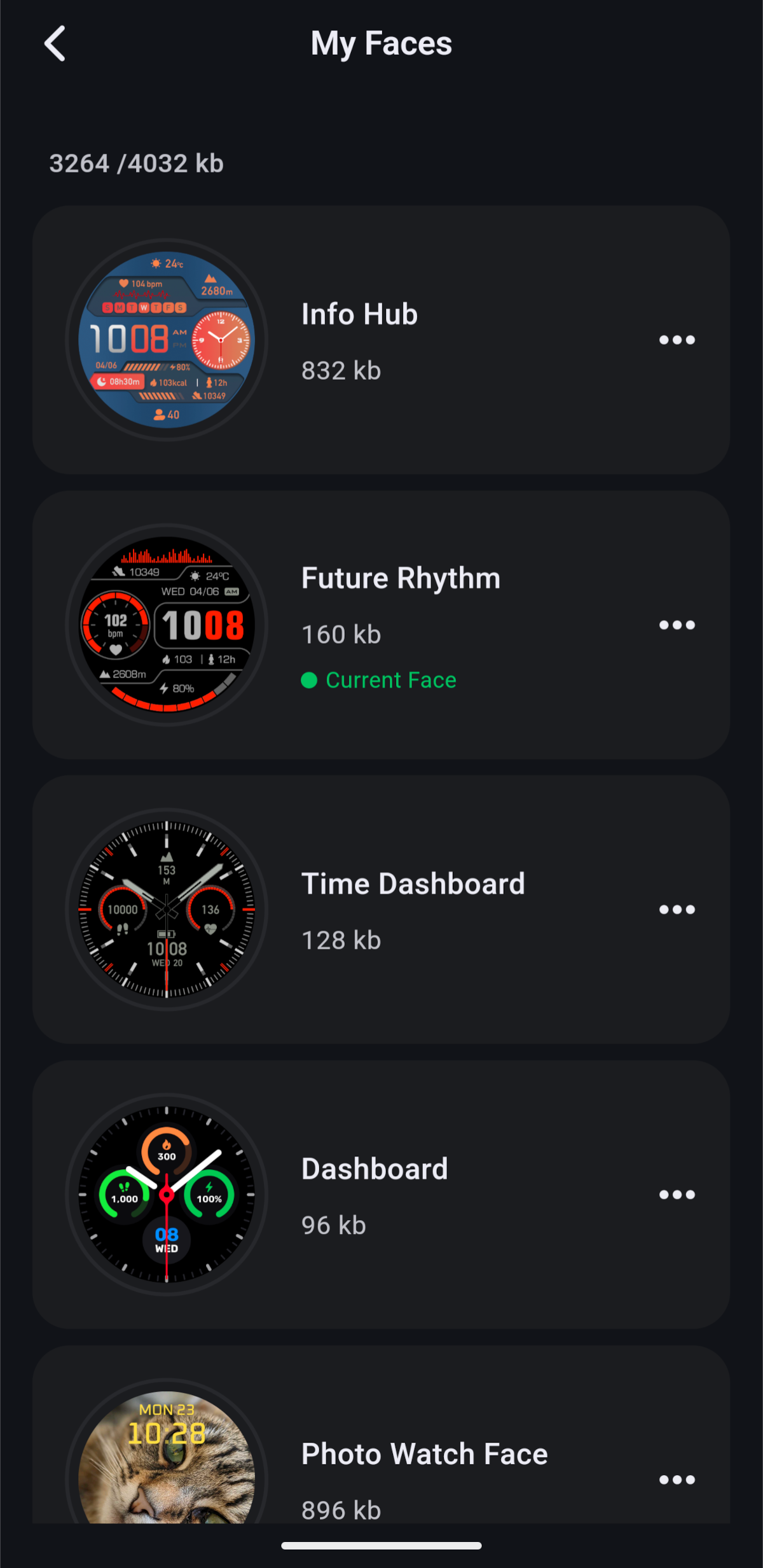
Many of the watch faces allow a certain level of customisation - either accent colours or action buttons - unfortunately, not complications.
The selection in the app is unfortunately very small, and they tend to be very stingy with complications. You’ll be hard-pressed to find any watch faces that display heart rate, weather, altitude, etc. Thankfully, two of the default watch faces are actually pretty rich with complications and are visually quite appealing, but that’s of course a matter of taste.

Battery Life and Charging
The watch comes with a large 670mAh battery, which translates to about 9 days of heavy usage with frequent GPS-tracked activities and home workouts, as well as torch, notifications, raise-to-wake, and calls.
The magnetic charging cable attaches securely and charges the watch from empty to full in about 1 hour. The watch also features power-saving modes that can extend battery life even further by limiting certain features, like notifications.
Health Monitoring
The usual suspects are covered here: heart rate, SpO2, sleep, stress, menstrual cycles, and breathing exercises. Pretty standard.
Heart rate, heart rate variability and SpO2
This watch sports the HX3695S sensor by Tianyihexin Electronics, which is found widely in the budget segment of Chinese watches. This company has a range of budget heart rate sensors, and the unit on this particular watch is one of their top SKUs. It is still a budget heart rate sensor, so it’s obviously not on par with those found on more sophisticated watches.
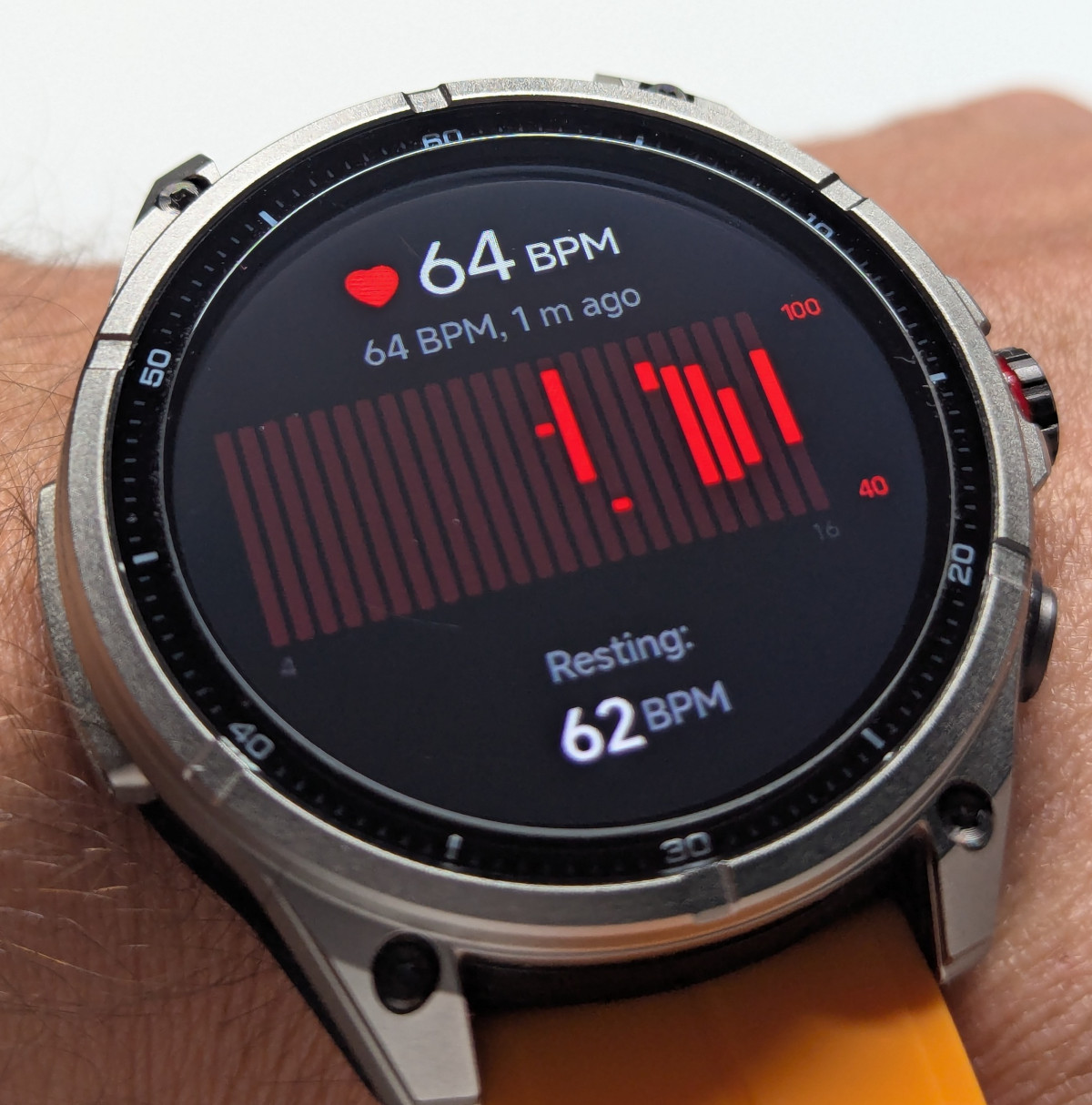
Continuous heart rate monitoring, as recorded by stats and the app, is done on a non-configurable 5-minute schedule, alongside heart rate variability. In addition to that, the heart rate sensor will also wake up when showing the watch face, as long as the watch face has a heart rate complication on it.
SpO2 is checked on a 10-minute schedule, conversely.
The heart rate sensor has a similar problem as other budget heart rate sensors: it often overshoots your heart rate when it comes online and tries to find your heart rate, but it finds a true reading fairly quickly. Unfortunately, this adds some ghost spikes to your heart rate monitoring data, which is a shame as it should be easily fixable in software by simply avoiding registering the first 10 seconds of heart rate readings. It is fortunately nowhere near as bad as the VC30F-S paired with the GloryFitPro firmware, which on some watches gives me frequent 120bpm peaks when I’m at rest and at about 60bpm.
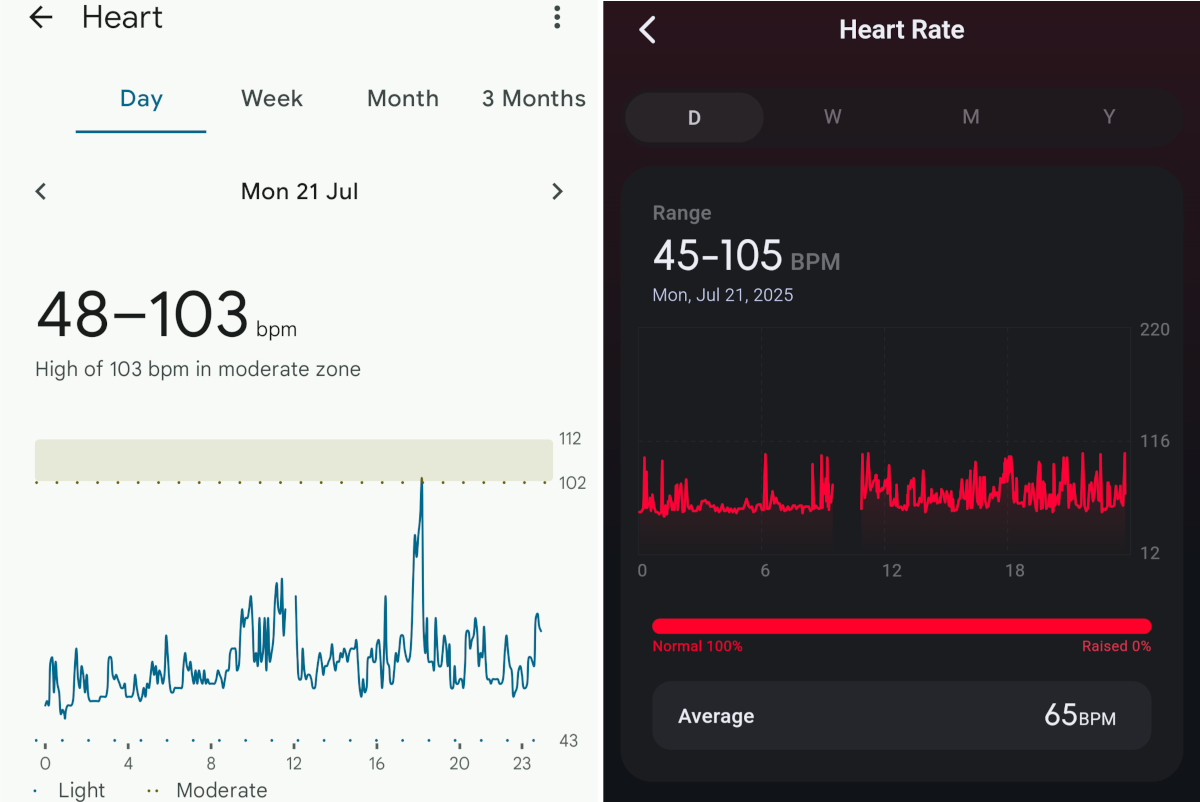
Heart rate variability is way off, however, compared to the readings of my Pixel Watch 2, which has a far better heart rate sensor.
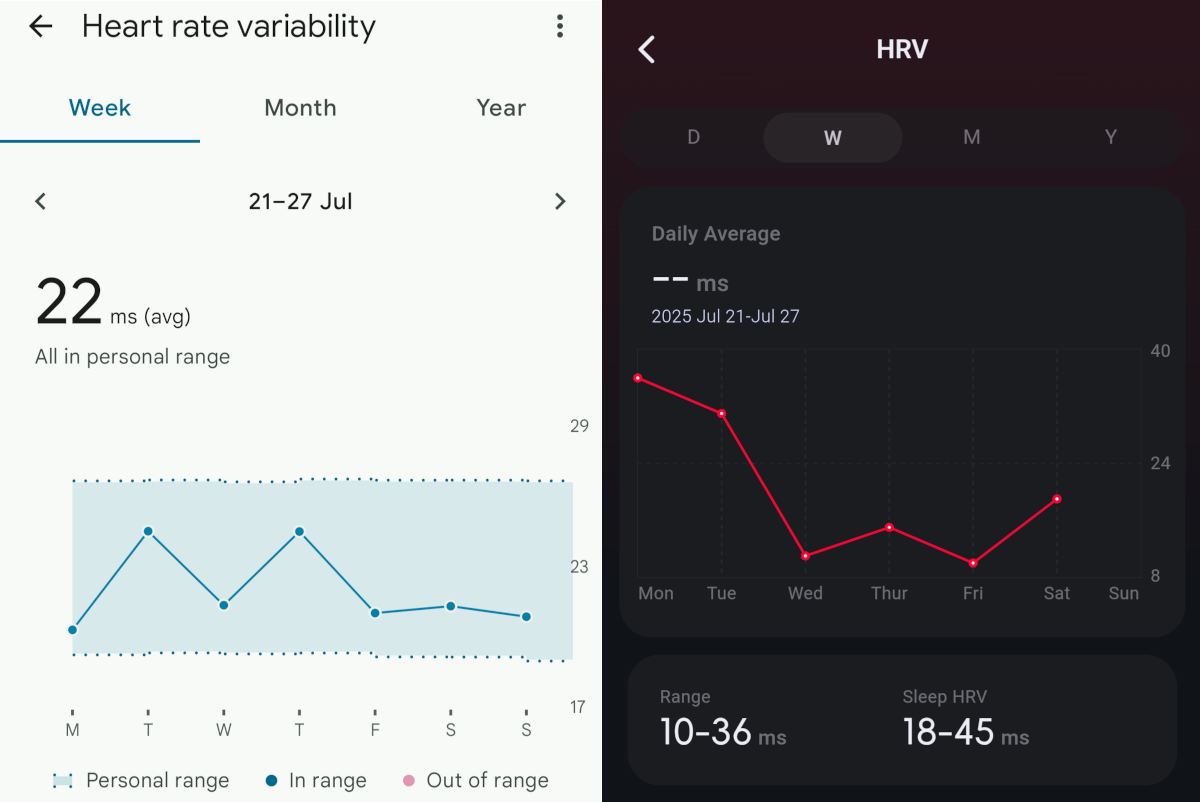
In general, I’d say it is good enough for casual monitoring. If you really need precise numbers here, you should look for a non-budget smartwatch.
Sleep tracking
Sleep tracking is another pleasant surprise. I came with very low expectations here, but the watch is actually quite able to work out when you fell asleep and when you awoke, and provides a very reasonable ballpark of the different sleep stages. The part where it does fail is in short awake moments, which most of the time it completely fails to detect. All in all, it’s probably good enough for most people and certainly good considering the price of the watch.
![]()
Stress
Not much to say about this. It measures your heart rate, then gives you a stress score. It seems to be reasonable, but I found its usefulness to be rather limited - more of a curiosity.
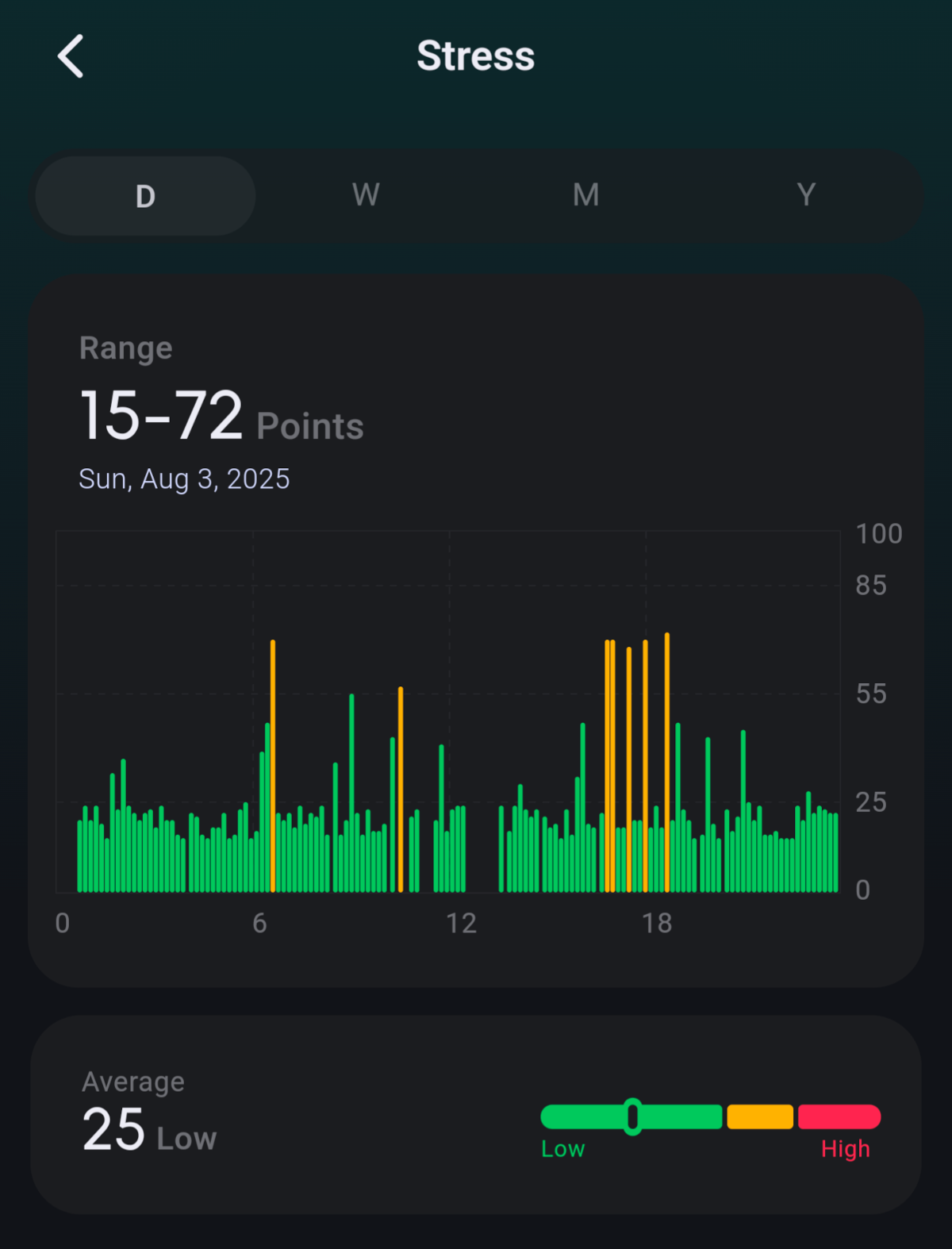
Fitness and Outdoor Features
GPS, compass and GPS-tracked activities
During my testing, I found the GPS unit on the watch to be reasonably accurate. It tracks routes with very little wobble and, in fact, often did better than my Pixel Watch 2, owing to the fact I live in a densely populated, high-rise area. GPS lock is acquired within a few seconds, as long as you’ve recently updated the AGPS data from the app (there’s a button to manually sync, or it does it automatically every so often), then it’s kept locked for the duration of the activity. I found it to be reliable at re-acquiring lock in situations where I entered and exited a building or went into tunnels. All in all, I’m very pleased with it.
Here’s a tracked walk around my area:
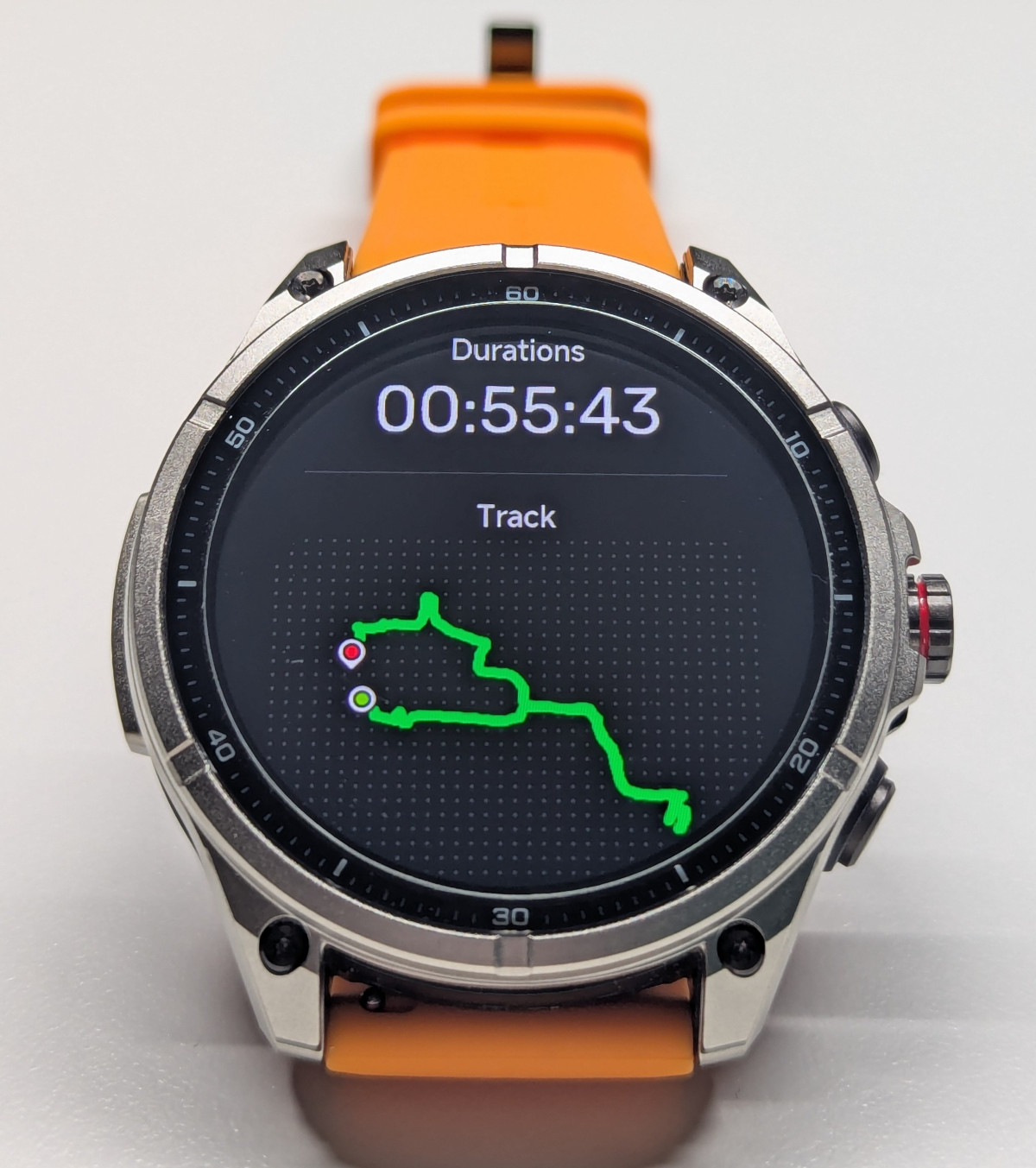
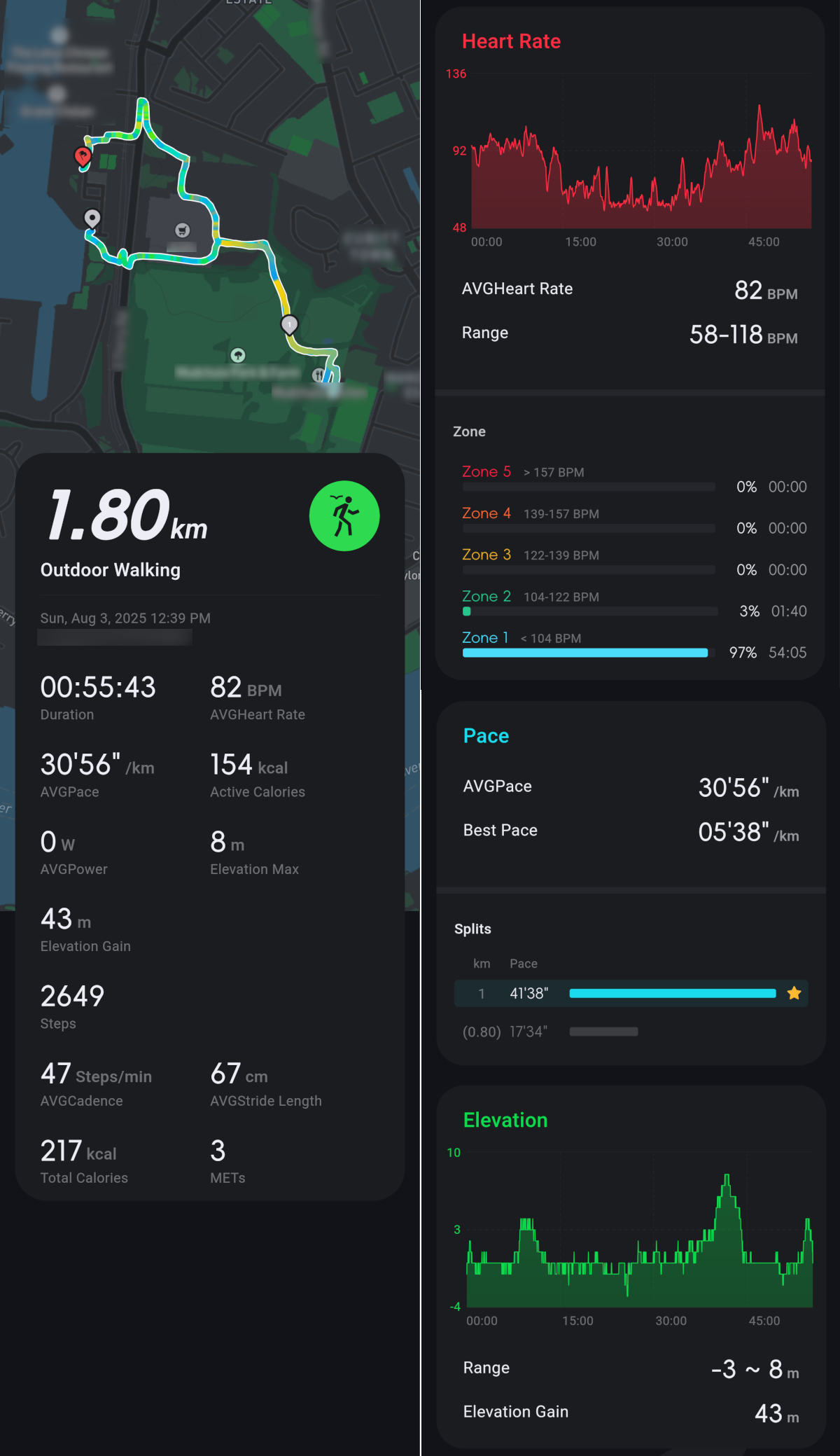
A very worthy result for a budget device with a single-band GPS unit. I found other activity data to align with my expectations, including calorie burns.
The compass also works fine. Once calibrated by swinging your arm in a figure of 8, it points to magnetic north without issue - as long as it’s not near a source of magnetic interference, like another electronic device. It keeps calibration for quite a while as well.
Barometer and barometric altimeter
In general, the barometer works fine. I’ve compared it to other devices I own and the results are comparable. The only negative point here is the altimeter - there are plenty of caveats to using atmospheric pressure as an altitude metric, but in this case, the calibration function on the watch seems bugged. It simply won’t stick, resetting itself after a few minutes.
It would also be good to get alerts when atmospheric pressure drops rapidly, as this is often an indicator of incoming bad weather.
Water resistance
The watch is rated for 5ATM and, if one is to believe the marketing materials, it’s suitable for swimming and has MIL-STD-810H certification. The watch has swimming modes as well as a water lock and water ejection feature. I personally would take this with a mountain of salt and not take it into the sea or prolonged swimming sessions. I haven’t tested this personally in either case.
Workouts
When it comes to stats like distances, calorie burns, steps, and heart rates, I found it to be reasonably close to my reference Pixel Watch 2, which is one of the best watches on the market for this.
There are loads of sports modes, and many of them are quite elaborated on the watch. For instance, here’s a GPS-tracked cycling workout, which gives you access not just to the basic heart rate / distance / speed, but also the route, compass, and altimeter:
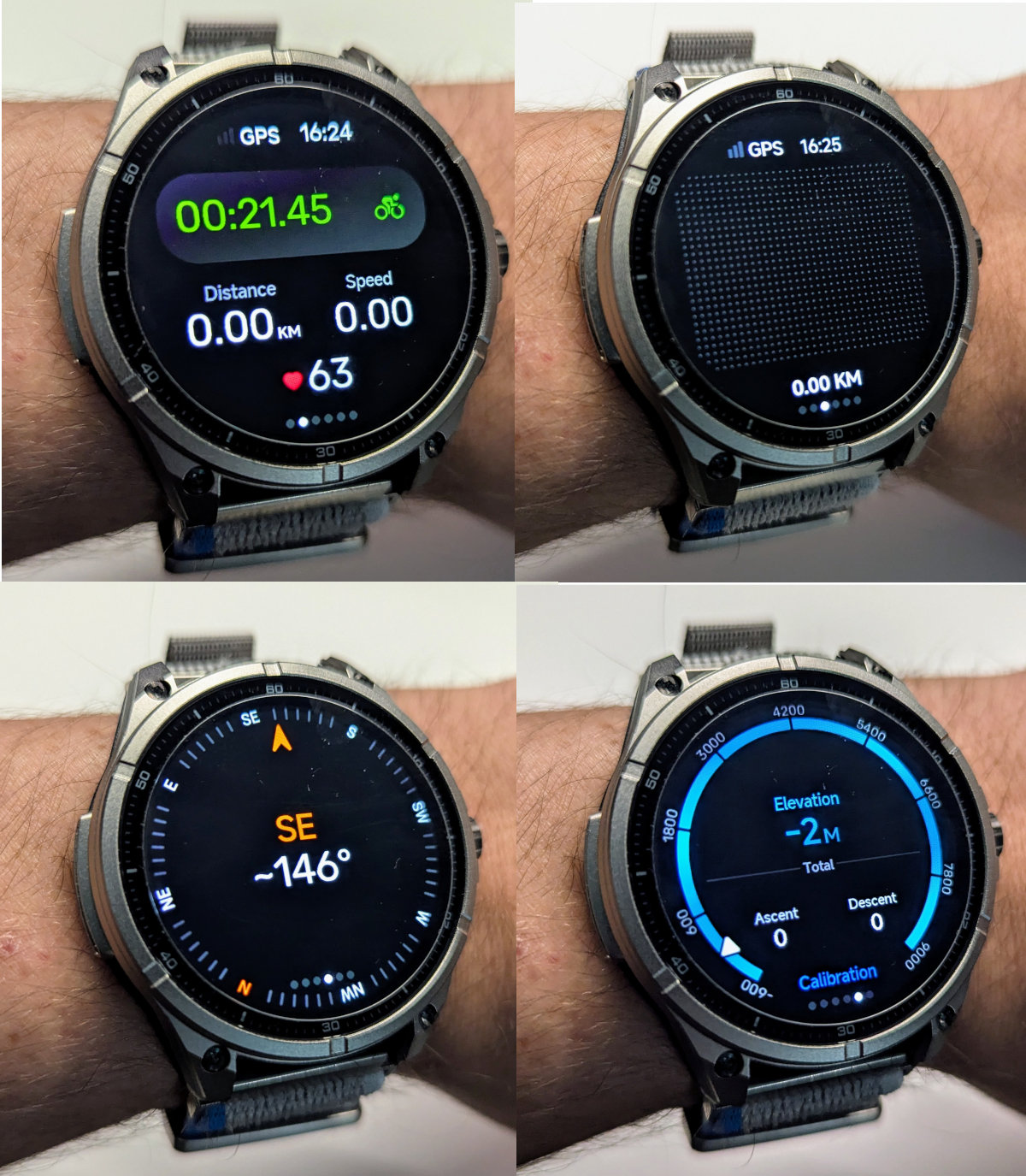
Here’s a strength training session taken on both the FT66 and the Pixel Watch 2. Calorie estimation and heart rate are really good, although if you’re eagle-eyed you can see a number of instances where the FT66 failed to register some heart rate peaks - which is par for the course for strength training, even on higher-end activity trackers. But nothing that detracts from the overall good result. Note that I paused the workout on the Pixel Watch 2 for a bit - for some reason the HR graph reflects it:
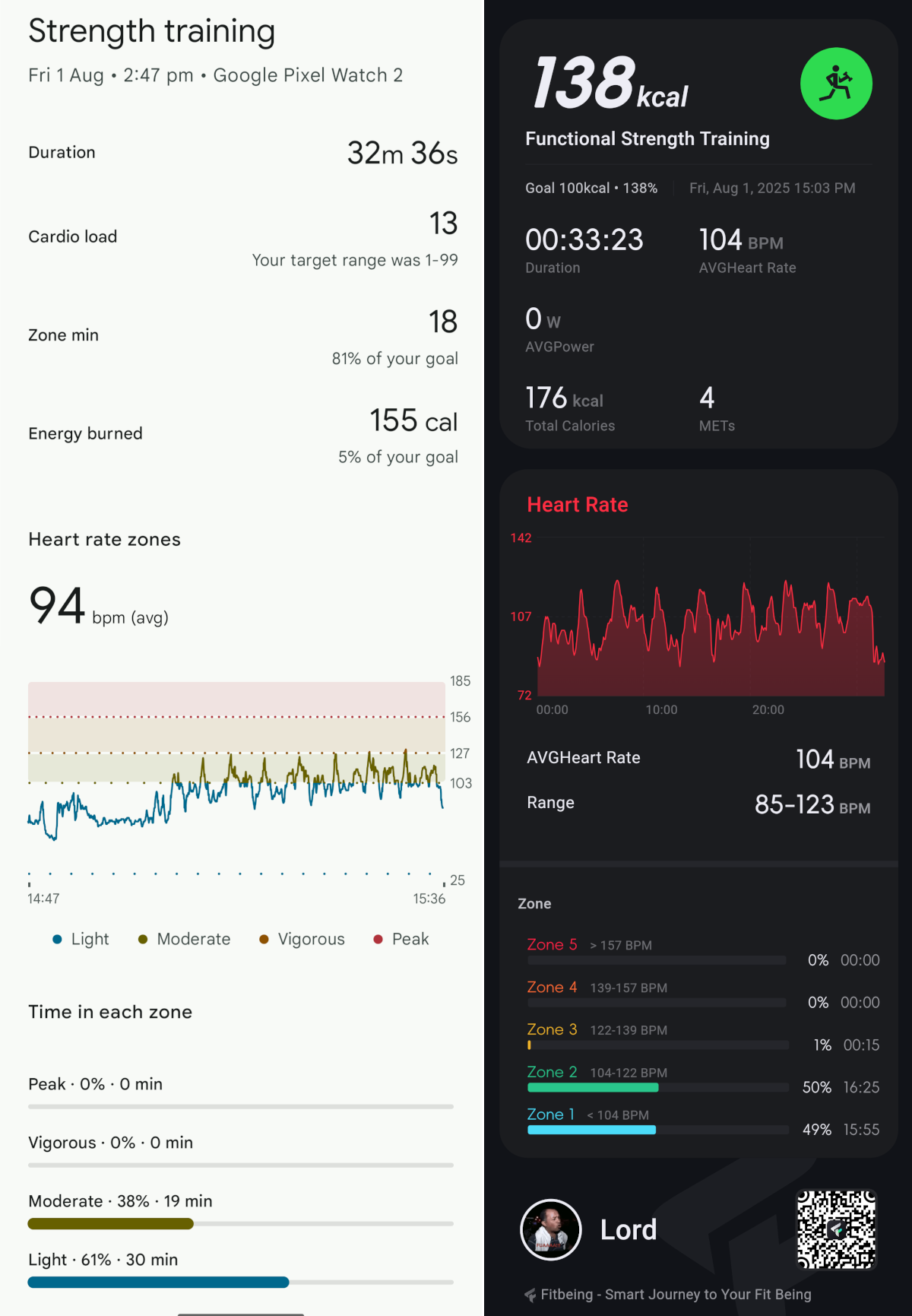
A short elliptical session:
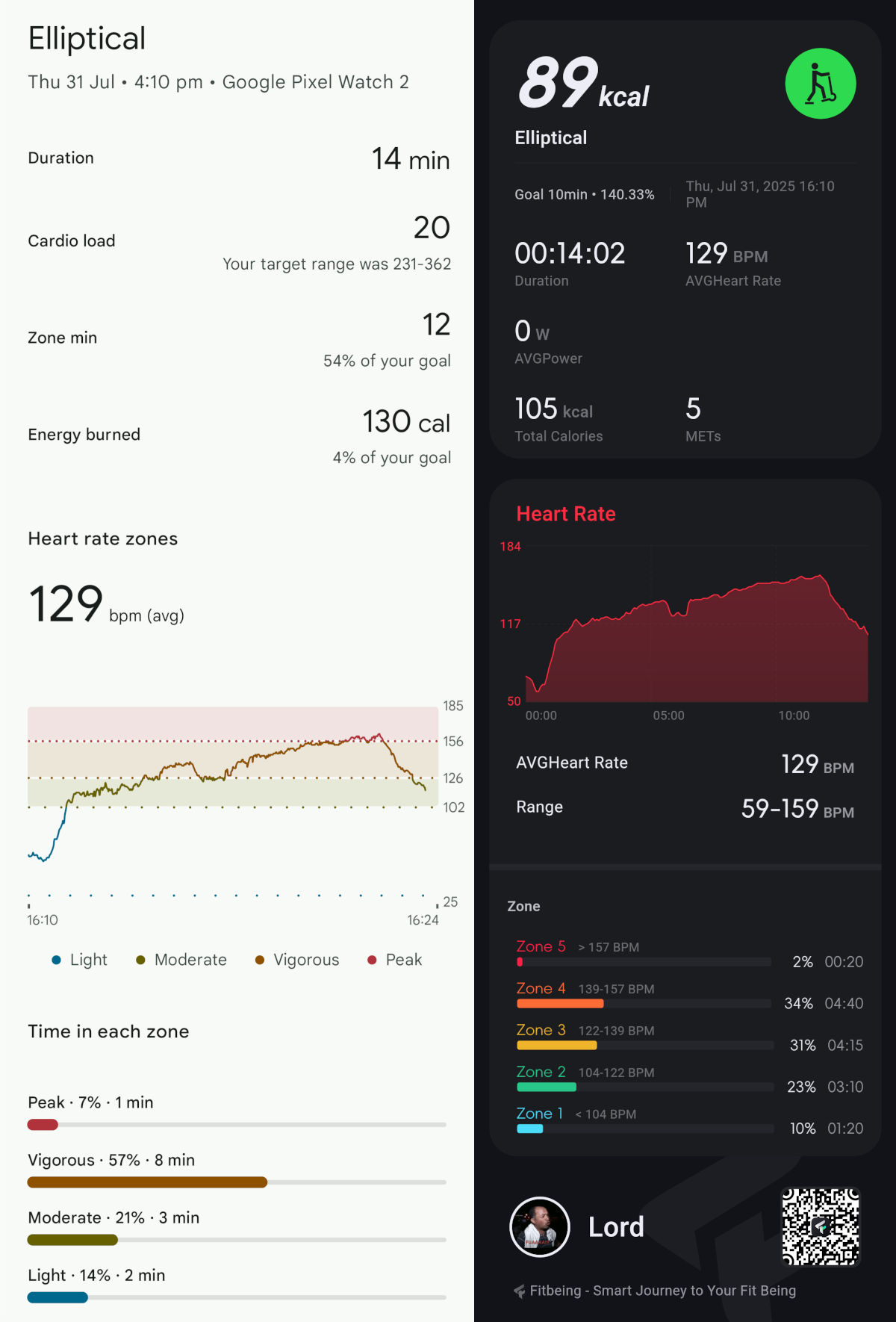
A short walk to the shops:
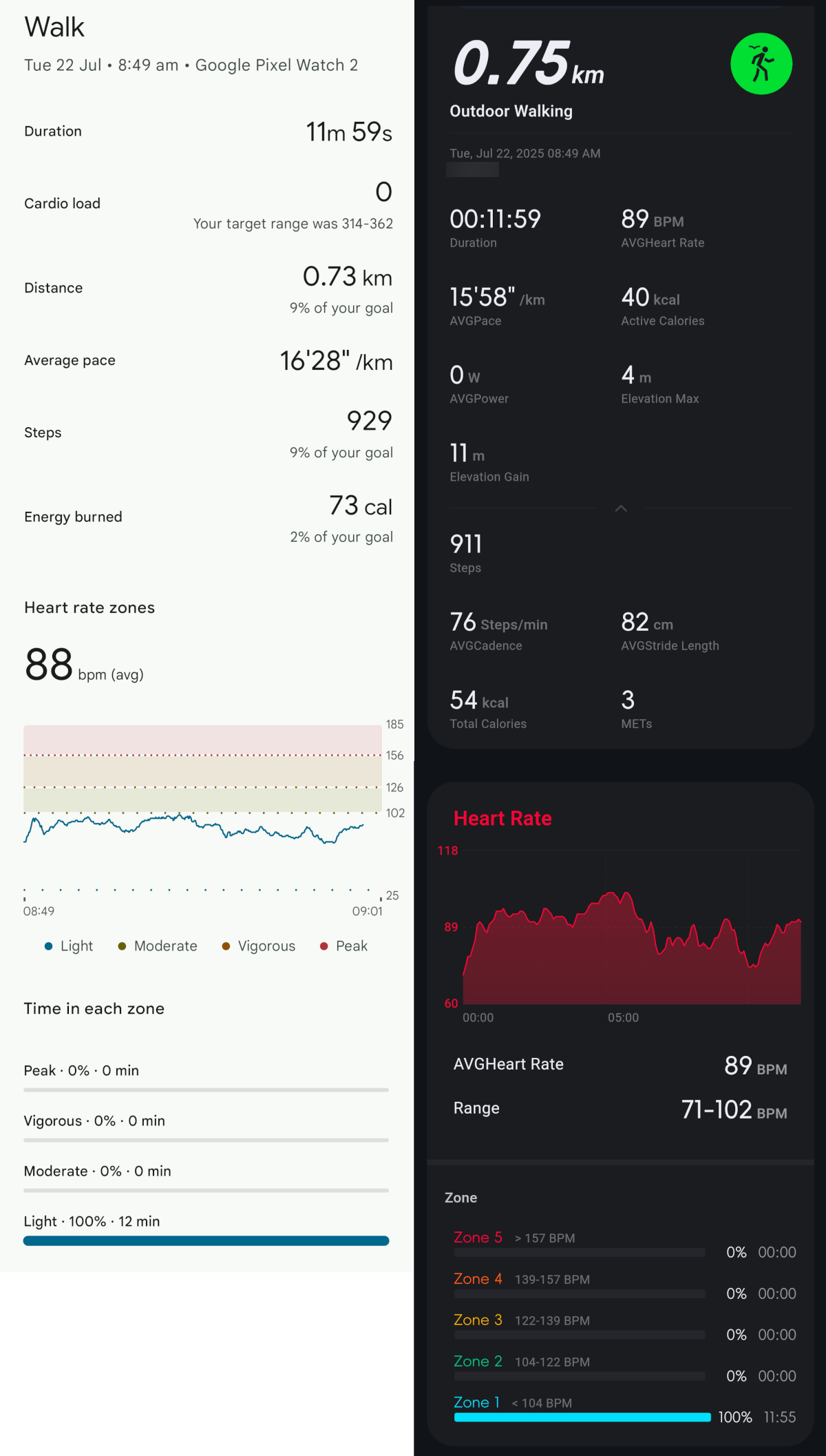
All in all, I have to say I’m very pleasantly surprised at the quality of the data, calorie estimation, and GPS tracking. Definitely very usable, and I would have no issues tracking all of my workouts permanently with this watch.
Smartwatch Features
As a smartwatch, the FT66 offers notification mirroring, music control, weather updates, and a handful of basic apps. The notification system works well enough, displaying messages and alerts from your phone, though interaction options are limited.
Some of them:
- Notifications / messages: this is the best budget smartwatch I’ve tried so far in this regard. No, it does not allow responding to messages, but it shows a lot of text - very rarely will they get cut off. The app also allows you to select nearly any app on your phone (at least on Android) to receive notifications from, including the calendar.
- Alarms: they can be created in-watch and work reliably.
- Timers: timers can be left in the background without being discarded and also work well enough. They’re easily noticeable, and if the watch is not in silent mode, you’ll definitely hear them. Hard to miss.
- Bluetooth calling: no issues here. The speaker and microphone work really well. Callers could hear me and I could hear them just fine. Worked impeccably.
- Weather: the weather app is fairly basic, but useful. It gives the current conditions, min/max temperature for the day, sky condition and a forecast for the next 4 hours.
- Find my phone / watch: works fine both ways. Bluetooth range seems quite good and I found I could find my phone from anywhere in my home.
The app: Fitbeing
I love this app. It’s really well laid out. It gives a lot of insight on your vitals - not just the usual few boxes of heart rate and whatnot, but also calorie burns that include your BMR, which is unheard of in this segment. Although unfortunately the watch does not fully measure TDEE, which would be neat and would require continuous HR monitoring ( which in turn would take care of the heart rate monitoring woes described earlier, as they’re a product of a cold-started sensor).
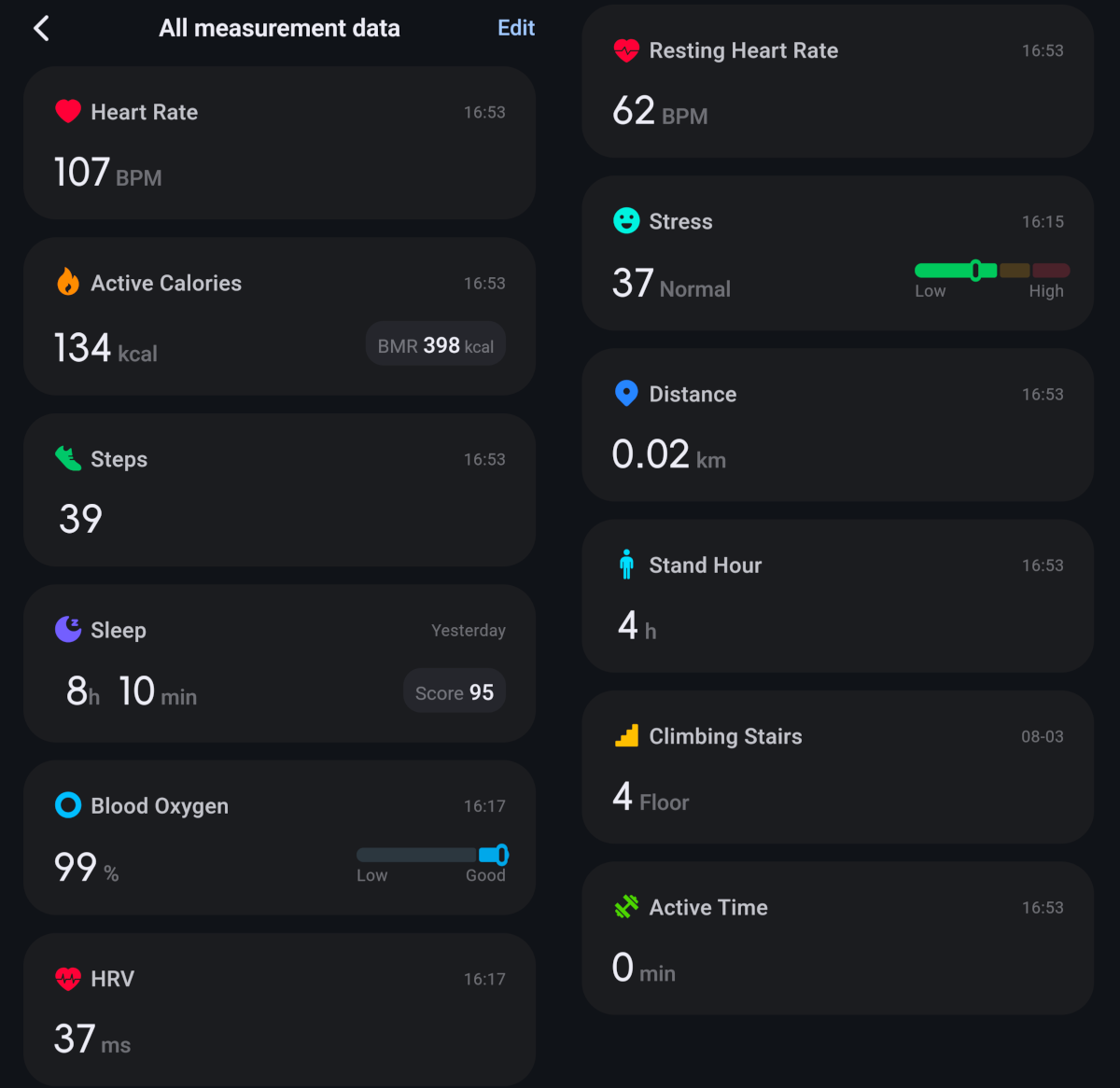
Workout records are easily accessible, well laid out, and full of data. No complaints here at all.
When it comes to watch management, the Bluetooth connection is solid. Notifications arrive instantly, AGPS is updated periodically, and health data is synced in the background whenever in range, so there’s usually no wait between opening the app and looking at your stuff.
AI insights
So yes, it’s 2025 and we have AI on absolutely everything and their grandma. In this case, the Fitbeing app integrates what they call “Kriki” (as opposed to Kriki OS, which is the watch’s firmware) into its health insights, and to be fair, they’re good to read.
For instance, here’s the elliptical session from the example above:
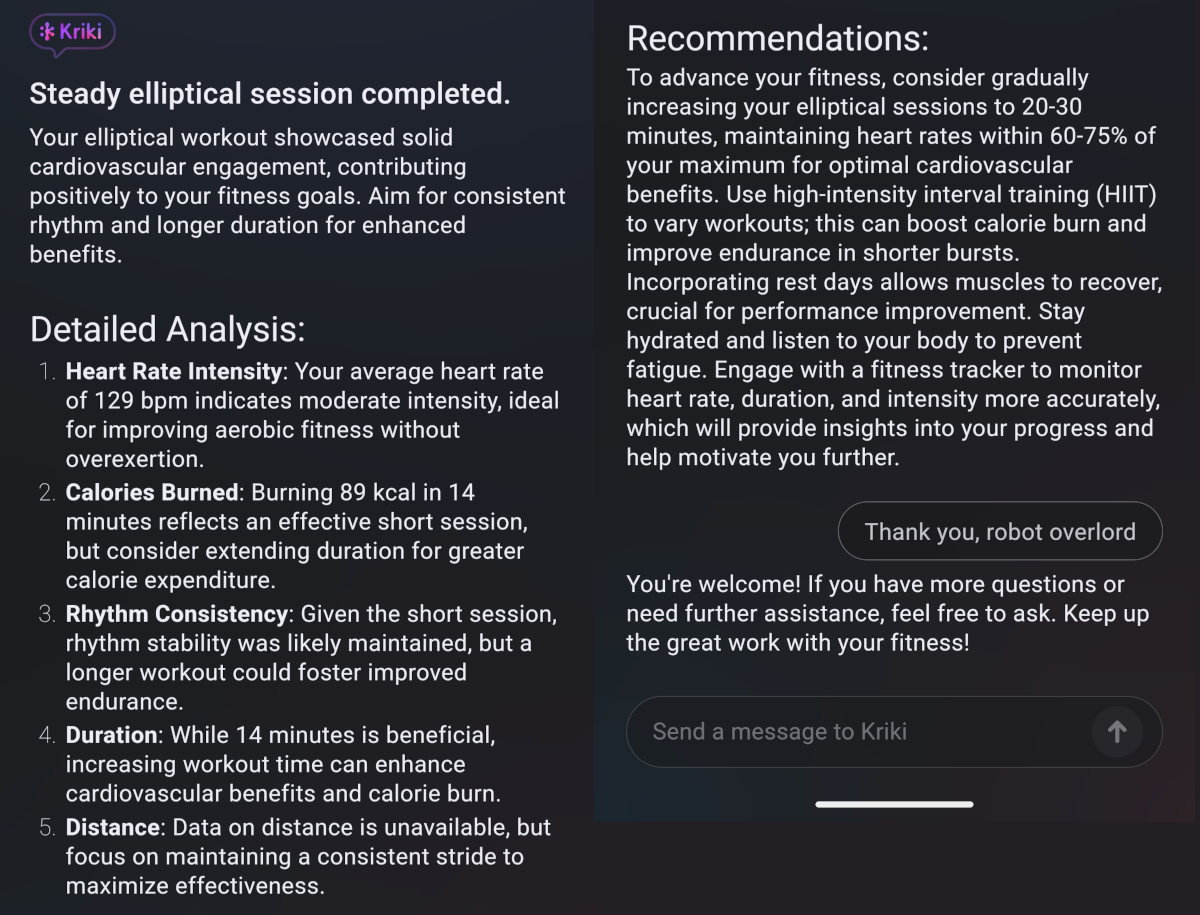
The AI has a separate tab, and you can talk to it. It has access to your data, so you can do stuff like this:
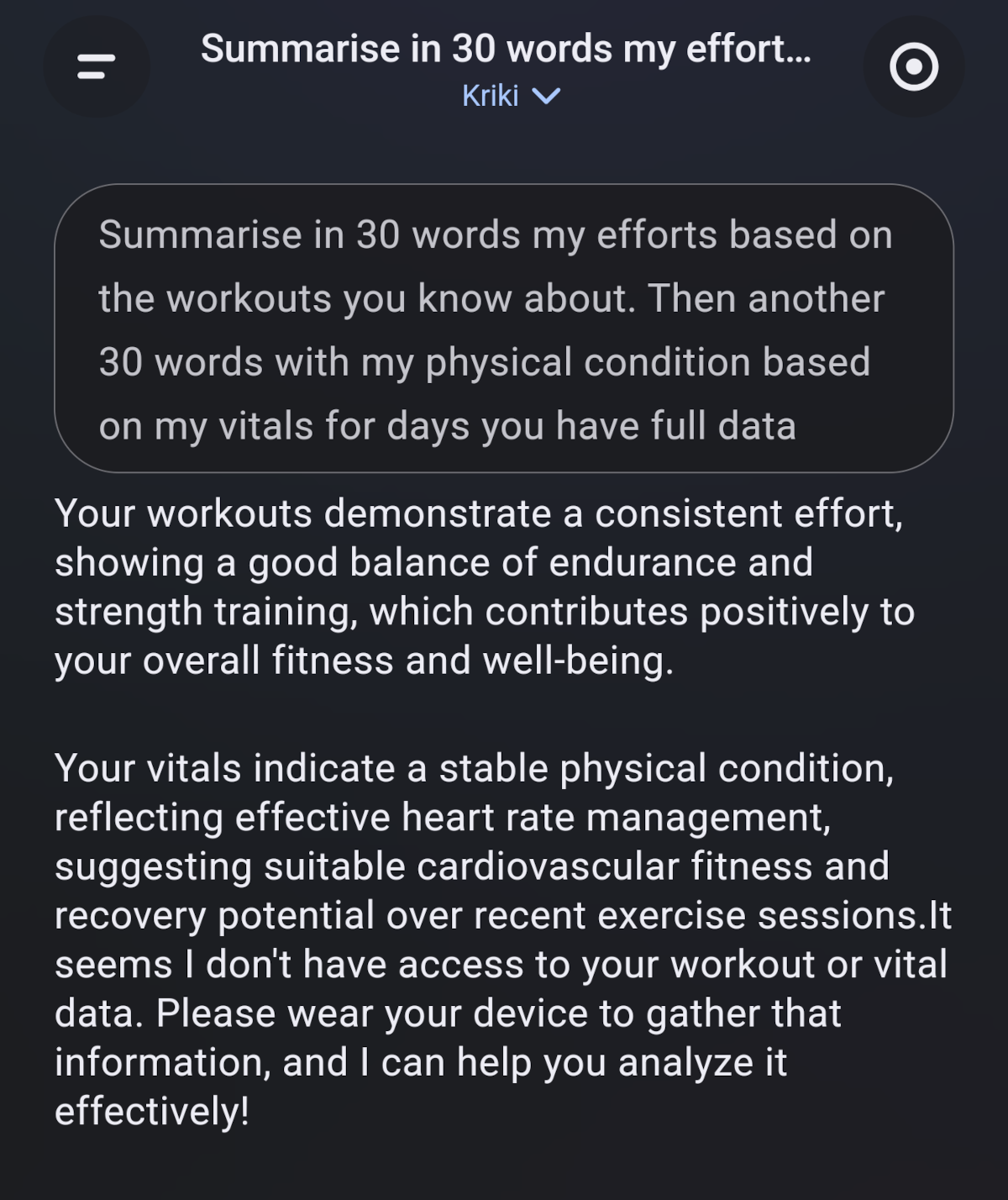
It’s probably a generic open-source model, though, as you can ask it any other random query like a macaroni cheese recipe.
Conclusion
The FT66 is absolutely phenomenal, punching well above its weight for a budget smartwatch. Its robust design, surprisingly fluid interface, bright AMOLED display, and generous feature set - including GPS, heart rate tracking, and a proper flashlight - make it a compelling choice in the sub-£40 category. While clearly inspired by the Garmin Fenix series, the watch brings its own strengths to the table and doesn’t feel like a cheap knockoff.
Performance is solid across the board. GPS tracking is reliable, the torch is genuinely useful, and the watch face and app experience are both polished and intuitive. There are some expected compromises: heart rate variability isn’t accurate, sleep tracking misses short wake moments, and the altimeter calibration is buggy. But these are forgivable given the price and the fact that most core functions work better than expected. Battery life is strong, and the Fitbeing app complements the watch well with its detailed health summaries and responsive syncing.
Overall, the FT66 is easy to recommend for anyone looking for an affordable fitness-focused smartwatch that doesn’t skimp on features. It’s not perfect, and it’s not trying to be, but for casual users or budget-conscious buyers, it’s arguably one of the best-value smartwatches currently available.